Contents
For several years now, there has been a buzz among cocktail enthusiasts around a long-lost ingredient that appears frequently in The Savoy Cocktail Book and The Café Royal Cocktail Book. The citrus liqueur Forbidden Fruit went off the radar in the 1970s. Many attempts have been made to restore its recipe over the past decade, but few have shared their impressions of the result and the exact proportions. We share!
The idea to restore the recipe for the forgotten liqueur came to Igor Alyoshin, the leader of the Dobrovar school, a long time ago. For some time, he and his team have been filming training videos for moonshiners, many recipes are taken from our website (one of the latest, by the way, was Blue Curacao – I recommend that you familiarize yourself with the blue anchan coloring experiment). I always had a positive attitude towards cooperation, so I was happy to support the idea of working on this project together.
The kids, of course, had a lot of fun. My task was different – to investigate, form a recipe and share it all with you. And at the same time close the topic of pomelo liqueurs for show. It came out like this…
Reconstruction of the Forbidden Fruit liqueur
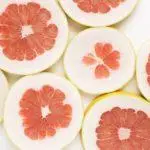
- 2 pomelo – zest of the 2nd and juice of the 1st
- 3 oranges – zest of 1 and juice of 3
- 1 lemon – zest and juice
- 1 vanilla pod – cut lengthwise
- 1 cinnamon stick – chopped
- 400-500 ml flower honey
- 250-300 ml cognac
- 250-300 ml fruit brandy
How to cook:
Remove the zest from citrus fruits without white subskin (it is very bitter, and the zest of the pomelo is already bitter in itself) and squeeze out the juice. The pulp of the pomelo (slices), before extracting juice from it, is cleaned from the bitter membrane-film. It is better to press the juice from the pomelo itself on the press or pass the pulp through the juicer. Place juice and zest in a heavy bottomed saucepan, add spices, bring to a boil, reduce heat to low and simmer for 5-10 minutes. Remove from heat, let cool to 60оC, add honey and mix thoroughly. Allow to cool to room temperature and add 500 ml of cognac or a mixture of cognac with any flavored fruit brandy.
Pour the contents of the saucepan along with the solid residue into a jar of a suitable volume, close the jar tightly and leave in a dark, cool place for 3 weeks to macerate. In the process of infusion, the contents of the jar can be shaken 1-2 times a day. After 3 weeks, strain the liquor through a sieve or several layers of gauze, filter through a cotton or coffee filter and pour into a clean container. Wait 2 weeks before tasting. Aging is welcome, but the liquor is best consumed within 1 year.
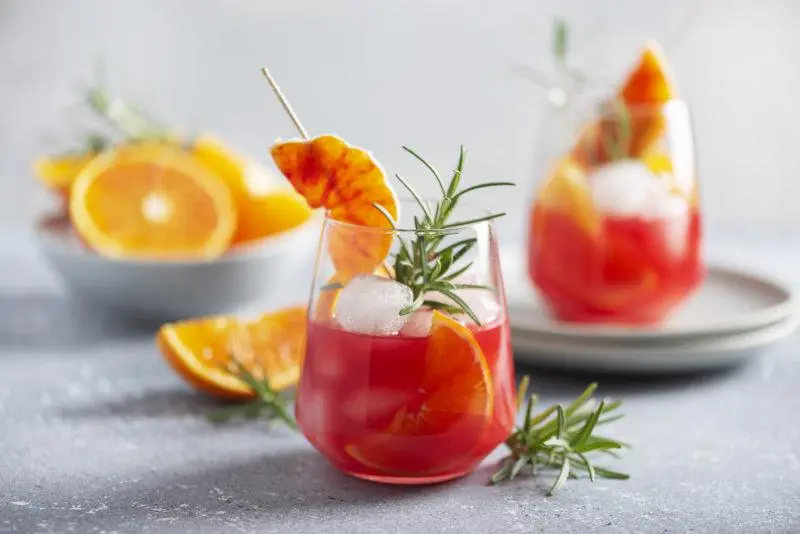
Dossier on “Forbidden Fruit”
Martin Doudoroff, one of the founders of Cocktail DB, traced the origin of the liqueur to Louis Bustanobi, a native of the Basque Country. He owned the Café des Beaux Arts (“Café of Fine Arts”) at 80 West 40th Street in New York City until his untimely death in 1917 at the age of 44. Opened in 1901, Bustanobi’s establishment was considered one of the best “lobster palaces” in the city. In 1911, Louis came up with an ideal business model: in the basement of a cafe, he installed a dance floor, where professional gigolos were hired (at one time the famous silent film actor Rudolph Valentino even worked there) to teach respectable ladies to dance. Later, his idea grew into the world’s first famous “ladies bar”.
One of the notes in the New York Times dated October 12, 1913 read: “In the women’s bar, drinks are chosen by color, not by taste …”. The bartenders of the Café des Beaux Arts, Francois and Gabriel, had to work hard to satisfy the desires of a new clientele. As François remarked: “They wanted pearl-colored drinks, amethyst drinks, opal drinks, and this forced us to be constantly on the creative search, coming up with new color combinations.”
Even before the “women’s bar” opened, Bustanobi offered the “Forbidden Fruit” cocktail – reputedly his own invention – for wives to enjoy a special, feminine drink while their husbands contemplated a glass of cognac or other strong digestif. Jared Brown, a cocktail detective and technologist at London’s Sipsmith Distillery, found only one recipe for this cocktail in Louis’ Mixed Drinks, 1906, by Boston restaurateur Louis Muckensturm:
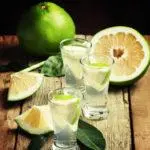
Cocktail “Forbidden Fruit” / Forbidden Fruit
Take half a grapefruit, remove the pulp and turn the peel inside out to form a small bowl. Put two pieces of sugar in it and pour two liqueur glasses of brandy. Set on fire, let it burn for 5-10 seconds and pour into glasses, serve hot. For each additional person, add a glass of brandy and half a sugar cube.
Macensturm also described in detail the recipe for the Orangine cocktail, which is prepared in the same way, only with an orange.

Of course, preparing such a complex drink in a place like the Café des Beaux Arts, with a large enough flow of customers, would be difficult. Therefore, Bustanobi and his brothers, André and Jacques, founded a side business in 1905, bottling a fragrant citrus liqueur in bottles with a gold ornament in the form of an orb with a crown (the symbol of the monarch, “sovereign apple”). He had the color of red flame – another shade in the palette of “ladies bar” cocktails.
 Dudorof goes on to say that the liquor was pomelo-based, while most predecessors defined it as a grapefruit-based drink. Who was right? Sheddock (citrus decumana) was named after British Navy Captain Sheddock, who brought the seeds of this Malaysian native to the West Indies in 1696. Not exactly a pomelo (citrus maxima or citrus grandis, although they are identified in most sources), not quite a grapefruit (citrus x paradis), sheddock is a thick-skinned relative of the pomelo that grows in Antigua, Grenada, Jamaica and other tropical areas. But was it the secret ingredient in the forgotten liquor?
Dudorof goes on to say that the liquor was pomelo-based, while most predecessors defined it as a grapefruit-based drink. Who was right? Sheddock (citrus decumana) was named after British Navy Captain Sheddock, who brought the seeds of this Malaysian native to the West Indies in 1696. Not exactly a pomelo (citrus maxima or citrus grandis, although they are identified in most sources), not quite a grapefruit (citrus x paradis), sheddock is a thick-skinned relative of the pomelo that grows in Antigua, Grenada, Jamaica and other tropical areas. But was it the secret ingredient in the forgotten liquor?
Perhaps that is how it was. A 1907 newspaper article titled “The Real Forbidden Fruit” provides another key to understanding our subject. It states that “The name of the forbidden fruit comes from the three dark brown finger marks that are sure to appear on this variety of sheddock. The spots are close to each other on one side and, according to legend, are traces of Eve’s fingers … “. In the same article, they write that “Forbidden Fruit was very much in demand among wealthy people who could get fruits fresh, until it began to be shipped abroad as widely as its cousins, grapefruit and sheddock.”
Not a grapefruit, not a sheddock, but a hybrid. Bustanobi, as the owner of one of the most luxurious “lobster palaces” in New York, could afford to export such exotics. In general, everything converges to a pomelo.
Forbidden Fruit by Erik Ellestad
Intrepid imbiber Eric Ellestad, on his blog Savoy Stomp, went to great lengths to replicate the secret recipe for the Forbidden Fruit, which, after Bustanobi’s bankruptcy in 1921, passed to the Philadelphia distillery Charles Jacquin et Cie, Inc. There, the liqueur was produced until the 1970s, when the bottle design was redirected for the new raspberry liqueur Chambord, and Forbidden Fruit was discontinued. Ellestad missed the pomelo season, so grapefruits and red (blood, Sicilian) oranges were used:
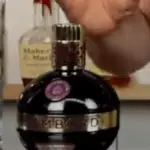
- 1 Marsh Ruby grapefruit – zest
- 1 “cocktail” grapefruit* – zest
- 4 small Sicilian oranges – zest
- 1 st. l. cardamom pods – chopped
- 1 st. l. coriander seeds – crushed
- 350 ml of vodka
- 350 ml brandy
- 200-220 g flower honey
- ½ tsp natural vanilla extract
Insist zest and spices on vodka with brandy for 2 weeks in a dark, cool place. Strain, add honey and vanilla extract (it can be replaced with a vanilla pod cut lengthwise, which must be put together with spices), mix thoroughly. Let stand for another week, remove from the sediment and filter. You should get about 750 ml of liquor.
* – cocktail grapefruit (Citrus × paradisi “Cocktail” | Mandalo | Citrus maxima “Cocktail”) is grown in the USA, it is exceptionally sweet and juicy. In fact, this is not a real grapefruit, but a cross between a Frua tangerine and a pomelo. It is similar to grapefruit in taste, but sweeter and not as sour.
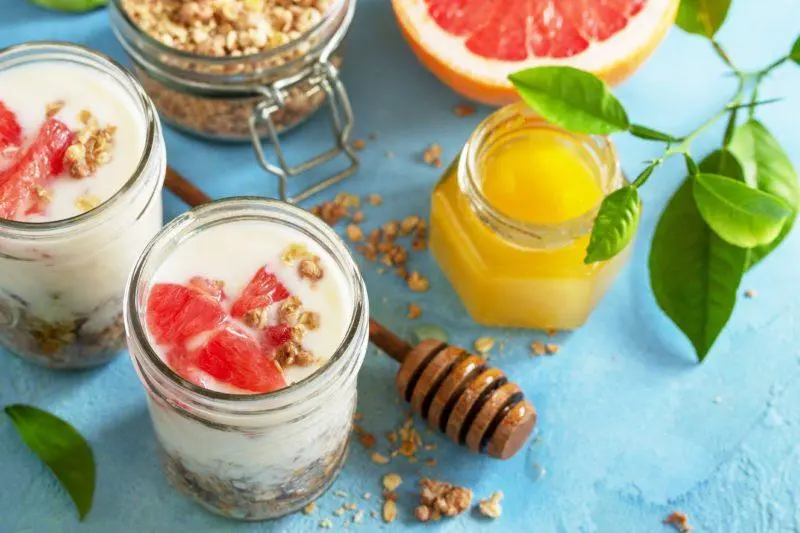
Another reconstruction of the Forbidden Fruit came from Giuliano Morandina, the legendary cocktail alchemist who has been in charge of the bar at the Dorchester Hotel in London for over 30 years (by the way, from 1937 to 1948 this bar was run by the unsurpassed Harry Craddock). Together with confectioner Robert Petrie, tasting old batches of Forbidden Fruit, they developed their own version of the lost liquor, boiling zest, juices, spices and honey. Their vision of the drink formed the basis of our experiment with Igor (although I only participated in the search and compilation of the optimal recipe). And it turned out … well, you saw everything yourself.
During its existence, Forbidden Fruit liqueur has undergone many changes and, according to tasters, after Bustanobi and Petri’s version (our version), “was not so citrusy and … not particularly sweet at all.”
The strength of the drink also changed, and several times. Initially, it was a 40-degree liquor. In Jacquin et Cie, the strength began to be lowered from the 1940s, first to 35% alcohol by volume, then to 32%, and then, perhaps even less. The latest versions of Forbidden Fruit bore little resemblance to the original Bustanobi digestif and were not suitable for cocktails at all.
Well, there is a certain interpretation of the liquor. It remains to attach it to the right cocktails. Three creations by Harry Craddock are perfect for this.

Cocktail “London Dorchester» / Dorchester of London
- 2 parts dry gin
- 2 parts Forbidden Fruit liqueur
- 1 part Cuban rum
Stir over ice and strain into a chilled cocktail glass.
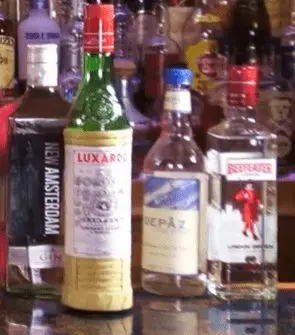
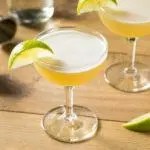
Cocktail “Tantalum” / Tantalus
- 1 part Forbidden Fruit liqueur
- 1 part freshly squeezed lemon juice
- 1 part dry gin
Shake with ice, strain into a chilled cocktail glass.
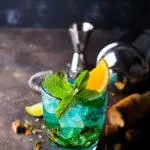
Cocktail “Virgin” / Virgin
- 1 part Forbidden Fruit liqueur
- 1 part Crème de Mente
- 1 part dry gin
Shake with ice, strain into a chilled cocktail glass.
Ликёр “Pomelochello” / Pomelocello
A truly fragrant pomelo can fill an entire room with its enticingly bitter, floral scent – a cross between grapefruit, lemon and rose. The peel of the pomelo can be candied, made into marmalade, and even used in cosmetics. Or you can make some kind of imitation of the well-known Italian Limoncello liqueur from it. It’s tasty!


- 2 yellow or pink pomeloes
- 750 ml vodka or moonshine/alcohol 50%
- 200-250 g of sugar
- 200-250 ml pure water
Rinse the pomelo thoroughly with a stiff brush, rub with a rough towel, and then remove the zest from them, trying to avoid bitter subcutaneous. Place the zest in a jar of a suitable volume, add vodka (although alcohol or moonshine with a strength of 50% is better), close the jar tightly and leave it in a dark, cool place for 1-4 weeks, but not longer. Shake the contents daily. Then strain, squeeze and add a simple syrup made from a glass of boiling water and a glass of sugar (you can use more water / sugar to get a less strong / sweeter drink). Let it rest for 2-3 days and you can try.
Now it’s your turn to find the forbidden fruit!









